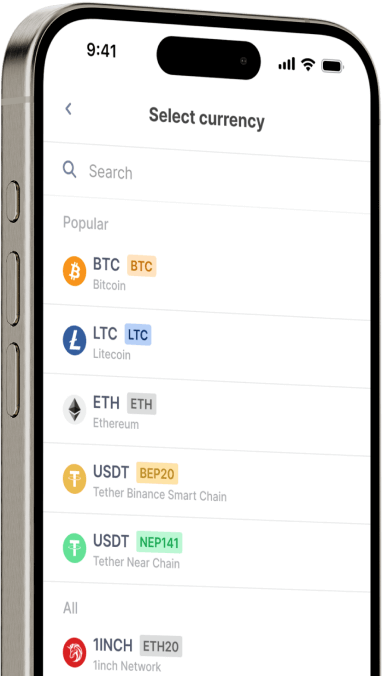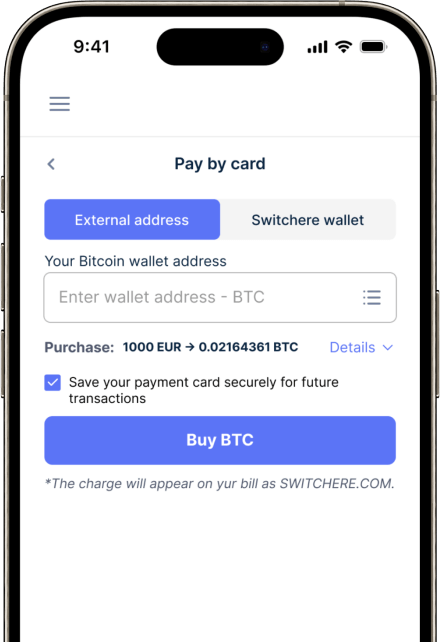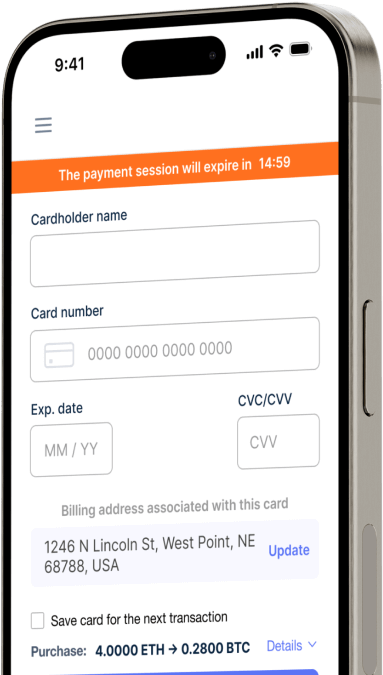Convert
Euro (EUR) to Avalanche (AVAX) Instantly
Purchase Avalanche (AVAX) with Euro (EUR) easily at Switchere and benefit from fast, secure transactions.
About
Avalanche (AVAX)
Avalanche (AVAX) emerges as a high-performance Layer 1 blockchain technology platform, meticulously engineered to address the critical scalability trilemma—achieving decentralization, security, and high throughput. Its primary purpose is to provide a robust and versatile foundation for decentralized applications (dApps) and custom blockchain deployments, known as subnets. This decentralized network utilizes the innovative Avalanche consensus protocol, a family of Snowball-influenced mechanisms, enabling near-instant transaction finality, typically under two seconds, distinguishing it within the competitive landscape of digital asset platforms. The platform's architecture fosters a flourishing ecosystem for complex smart contracts and diverse Web3 infrastructure.
The core architecture of Avalanche is uniquely structured around three distinct yet interoperable chains: the Exchange Chain (X-Chain) for creating and managing digital assets, the Platform Chain (P-Chain) for coordinating validators, tracking active subnets, and enabling new subnet creation, and the Contract Chain (C-Chain) for executing Ethereum Virtual Machine (EVM) compatible smart contracts. This multi-chain design facilitates a wide array of use cases, prominently including advanced DeFi applications, enterprise solutions, and blockchain-based gaming. The native utility token, AVAX, is integral to the ecosystem's tokenomics; it's used for paying transaction fees across the network, securing the platform through staking by validators, participating in on-chain governance decisions, and as a common unit of account among subnets. This positions Avalanche as a significant and adaptable infrastructure layer aiming to support a new generation of decentralized systems and digital ledgers.
Buy Other 150+ Cryptocurrencies for Euro (EUR)
Other Coins for Euro (EUR)
-
EUR to ZRX
-
EUR to 1INCH
-
EUR to AAVE
-
EUR to ACH
-
EUR to ALGO
-
EUR to TLM
-
EUR to ANKR
-
EUR to APE
-
EUR to NFT
-
EUR to API3
-
EUR to APT
-
EUR to ARPA
-
EUR to AUDIO
-
EUR to AVAX
-
EUR to AVAX
-
EUR to AXS
-
EUR to BADGER
-
EUR to BAL
-
EUR to BNT
-
EUR to BAT
-
EUR to BNB
-
EUR to BSW
-
EUR to BSV
-
EUR to BLUR
-
EUR to BONE
-
EUR to CTSI
-
EUR to CELR
-
EUR to CELO
-
EUR to CEL
-
EUR to LINK
-
EUR to CHZ
-
EUR to CHR
-
EUR to C98
-
EUR to COMP
-
EUR to CFX
-
EUR to PEOPLE
-
EUR to CVX
-
EUR to ATOM
-
EUR to CTC
-
EUR to CRV
-
EUR to DAI
-
EUR to DASH
-
EUR to MANA
-
EUR to DENT
-
EUR to DGB
-
EUR to DYDX
-
EUR to XEC
-
EUR to EOS
-
EUR to ETC
-
EUR to ENS
-
EUR to ETHW
-
EUR to FET
-
EUR to FIL
-
EUR to FLOKI
-
EUR to GALA
-
EUR to GNO
-
EUR to ONE
-
EUR to HBAR
-
EUR to HOT
-
EUR to HOOK
-
EUR to ICX
-
EUR to ILV
-
EUR to IMX
-
EUR to INJ
-
EUR to ICP
-
EUR to IOST
-
EUR to IOTX
-
EUR to JASMY
-
EUR to JST
-
EUR to KAVA
-
EUR to KCS
-
EUR to KSM
-
EUR to KNC
-
EUR to LDO
-
EUR to LQTY
-
EUR to LPT
-
EUR to LOOKS
-
EUR to LRC
-
EUR to LUNA
-
EUR to MKR
-
EUR to MASK
-
EUR to EGLD
-
EUR to ALICE
-
EUR to NEAR
-
EUR to XEM
-
EUR to NEXO
-
EUR to NOT
-
EUR to NMR
-
EUR to OKB
-
EUR to OMG
-
EUR to ONT
-
EUR to EDU
-
EUR to OP
-
EUR to OGN
-
EUR to CAKE
-
EUR to PAXG
-
EUR to PENDLE
-
EUR to DOT
-
EUR to POL
-
EUR to QTUM
-
EUR to QNT
-
EUR to RDNT
-
EUR to XRD
-
EUR to RVN
-
EUR to REN
-
EUR to RSR
-
EUR to RLC
-
EUR to RPL
-
EUR to SFP
-
EUR to SHIB
-
EUR to SKL
-
EUR to SXP
-
EUR to STND
-
EUR to STG
-
EUR to XLM
-
EUR to GMT
-
EUR to STORJ
-
EUR to STMX
-
EUR to SUSHI
-
EUR to SNX
-
EUR to USDT (Polygon)
-
EUR to USDT (AVAC)
-
EUR to USDT (BEP20)
-
EUR to USDT (ERC20)
-
EUR to USDT (SPL)
-
EUR to USDT (NEP141)
-
EUR to USDT (FA2)
-
EUR to USDT (TRC20)
-
EUR to USDT (JETTON)
-
EUR to XTZ
-
EUR to GRT
-
EUR to SAND
-
EUR to TFUEL
-
EUR to THETA
-
EUR to RUNE
-
EUR to TON
-
EUR to TUSD (BEP20)
-
EUR to TUSD (TRC20)
-
EUR to TWT
-
EUR to UOS
-
EUR to UMA
-
EUR to UNI
-
EUR to USDC (Polygon)
-
EUR to USDC (SPL)
-
EUR to USDC (OP)
-
EUR to USDC (BEP20)
-
EUR to USDC (AVAC)
-
EUR to USDC (ARB)
-
EUR to USDC (ERC20)
-
EUR to VET
-
EUR to VRA
-
EUR to WAXP
-
EUR to WOO
-
EUR to WLD
-
EUR to WBTC
-
EUR to WMINIMA
-
EUR to XDC
-
EUR to YFI
-
EUR to YGG
-
EUR to ZIL
How to Buy Avalanche (AVAX)
Frequently Asked Questions
-
What is the most common procedure for purchasing Avalanche (AVAX) using Euros (EUR)?
The most common procedure for purchasing AVAX with EUR involves utilizing a reputable cryptocurrency exchange that offers EUR fiat on-ramp services. Users typically deposit Euros via SEPA transfer or a Euro-denominated credit/debit card. Once the EUR balance is reflected on the exchange, you can directly trade it for AVAX, which is then commonly stored in a digital wallet compatible with the Avalanche C-Chain for smart contract interactions or the X-Chain for asset management.
-
Why is the EUR/AVAX trading pair strategically important for accessing the Avalanche Network's features like subnets?
The EUR/AVAX trading pair provides a direct fiat gateway for European users to acquire AVAX, the native token of the Avalanche Network. This is strategically important for participating in network security through AVAX staking on the P-Chain, paying for transaction fees on the high-throughput C-Chain (EVM-compatible), or deploying and interacting with custom blockchain deployments known as subnets, a core scaling solution of Avalanche.
-
How quickly are EUR to AVAX trades typically processed, considering both fiat and blockchain components?
The processing time for EUR to AVAX trades has two main stages. EUR deposits to an exchange can range from near-instant (with methods like Instant SEPA or card payments) to 1-2 business days for standard SEPA transfers. Once EUR is available, the actual trade on the exchange's order book is typically immediate. The subsequent transfer of AVAX to a personal digital wallet benefits from the Avalanche consensus protocol (Snowman), which usually achieves transaction finality in under two seconds.
-
What kind of KYC/AML verification is typically required for EUR to AVAX transactions on exchanges?
For EUR to AVAX transactions, especially when using regulated cryptocurrency exchange platforms within the Eurozone, robust KYC/AML compliance is standard. This generally entails submitting government-issued identification, proof of address, and sometimes a source of funds declaration. These measures are crucial for preventing illicit activities and ensuring a secure trading environment for digital asset purchases.
-
What are the typical fees involved when converting EUR to AVAX via a cryptocurrency exchange?
When converting EUR to AVAX, users should anticipate several potential fees: EUR deposit fees (which can vary based on method, e.g., SEPA transfers vs. card payments), trading fees on the cryptocurrency exchange (often a percentage of the transaction value, differing for makers and takers), and AVAX withdrawal fees if moving the tokens to an external digital wallet. Additionally, transactions on the Avalanche Network itself, particularly on the C-Chain, incur gas fees paid in AVAX.
-
What are essential security precautions when conducting EUR to AVAX exchanges and storing AVAX tokens?
Essential security precautions for EUR/AVAX transactions include using strong, unique passwords and enabling two-factor authentication (2FA) on your chosen cryptocurrency exchange. For storing AVAX, especially significant amounts, transferring them from the exchange to a personal non-custodial digital wallet, preferably a hardware wallet, is highly recommended to maintain control over your private keys. Always be vigilant against phishing attempts and ensure you are interacting with legitimate platforms when managing your AVAX digital assets on any of Avalanche's chains (X-Chain, P-Chain, C-Chain).




